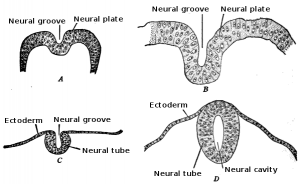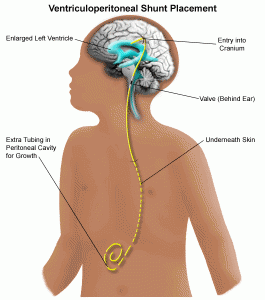Cephalic Disorders
Cephalic disorders1 relate to defects that occur during the first trimester of pregnancy and that relate to the formation of the central nervous system. These include neural tube defects (Fig. 1). When they survive, infants with cephalic disorders will live with major disabilities, physical and/or cognitive. Anencephaly (see full Glossary) is one of the most common cephalic disorders.
Figure 1. Folding of the Neural Tube – Neural tube defects begin during the folding of the neural plate
Other types of cephalic disorders involve neuronal migration disorders that may be linked to genetic abnormalities. These will cause for major areas of the brain (see full Glossary) or the central nervous system central nervous system (see full Glossary) not to fully develop. Children with neuronal migration disorders appear to be typically developing; other may have facial or skull features that a neurologist will identify.[2]
This type of damage causes major disorders for infants and young children, often leading to death. Cephalic disorders may be influenced by hereditary or genetic conditions or by environmental exposures during pregnancy. The more scientists gain an understanding of the normal development of the human nervous system, the better the understanding of cephalic disorders they may acquire.
Treatment
Since this type of condition cannot be cured, treatments for cephalic disorders depend upon the particular type of disorder. For most cephalic disorders, managing the condition includes the following:
- providing medical treatment like anti-convulsant medications
- inserting a shunt. This is a procedure (Fig. 2) to release pressure from liquid build up in the brain through a specialized medical
- providing physical therapy (PT).
Figure 2. Ventriculoperitoneal Shunt Placement
Expected recovery
How a child will fare with this disorder depends on the severity of the disorder. Many children experience some cognitive delays, a number of children die or may be greatly impacted and live with multiple disabilities.
1. http://www.medic8.com/neurological-disorders/cephalic-disorders.htm
2. Source: National Institute of Neurological Disorders and Stroke, available at http://www.ninds.nih.gov/disorders/neuronal_migration/neuronal_migration.htm


0 comments
Kick things off by filling out the form below.
You must log in to post a comment.